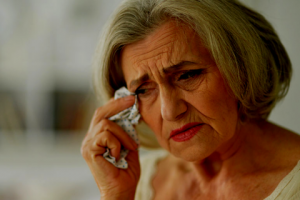
Blood sugar control is a crucial aspect of overall health, particularly for individuals at risk of diabetes or those seeking to maintain stable glucose levels. Fortunately, recent research has revealed a straightforward and efficient solution: a two-minute walk after a meal. This article will discuss the importance of blood sugar control, the causes of post-meal blood sugar rises, and the health advantages of adding post-meal walks to your daily routine.

Understanding Blood Sugar
Blood Sugar: What Is It?
Blood sugar, also referred to as glucose in science, is a type of sugar that circulates in the blood and is the body’s main source of energy. Its management is crucial for overall health because it is crucial to many bodily processes.
The Effects of High Blood Sugar
Too much blood sugar can have a major negative impact on your health and increase your risk of diabetes, heart disease, and other chronic conditions. Controlling blood sugar is crucial for preventing several health issues.
Blood Sugar Rises After a Meal
Why Do Blood Sugar Levels Increase After Eating?
Blood sugar levels normally rise after meals because the body releases glucose into the blood after the breakdown of carbs. After meals, some foods, especially those high in refined carbohydrates and sugars, might induce more significant blood sugar spikes.
Study on Two-Minute Walks After Meal
Taking a two-minute walk after a meal can help prevent post-meal blood sugar rises, according to a ground-breaking study. Researchers discovered that this brief period of physical activity can significantly affect blood sugar levels.
How Does Walking After Meal Works?
This solution’s underlying process is rather simple. Even short periods of exercise can encourage muscle cells to absorb glucose from the circulation. Through this approach, blood sugar levels are efficiently lowered, assisting people in maintaining better control.
Advantages Of a Walk after Meal
Blood Sugar Management
A major advantage of walk after a meal is better blood sugar regulation. After eating, taking a quick walk can help keep blood sugar levels in a safe range, lowering the chance of spikes and associated health problems.
Weight Control
Additionally, adding a walk after a meal to your regimen can help you control your weight. Better blood sugar regulation is intimately linked to maintaining a healthy weight, making these quick walks a useful habit.
Read Also: The Early Dinner Advantage: 5 Amazing benefits of having early dinner
Following The Two-Minute Walk Routine
Making Walks a Part of Your Routine
Consider basic tactics like parking further away from your destination or taking a walk around your house or office after meals to develop the habit of post-meal walking. Your ability to control your blood sugar may be significantly impacted by these tiny adjustments.
Timing and Length
Your post-meal walk can happen at any time, and when you go depends on your personal schedule. Typically, you should walk within 30 to 2 hours of eating, and even a short stroll of 2 minutes can be beneficial.
Safety Measures and Medical Conditions
Even though post-meal walks are generally safe for most people and provide many advantages, it’s important to use caution, especially if you have medical conditions. The following are some things to remember:
Consult Your Healthcare Provider
It’s critical to speak with your healthcare provider before beginning any new fitness regimen, especially if you have underlying health conditions. They can offer you personalized guidance depending on your medical background and present state.
Diabetes Management
If you have diabetes, your doctor may need to change the amount of medication or insulin you’re taking or how often you go for walks after meals. Blood sugar levels must be regularly monitored, and your healthcare practitioner may advise you on how to accomplish this successfully.
Orthopaedic Issues
People who have orthopaedic problems, such as arthritis, joint issues, or recent operations, should take extra care when walking, especially if they are in pain or discomfort. Consult a physical therapist or orthopaedic professional for advice on safe and appropriate activities in such circumstances.
Cardiovascular Conditions
It’s critical to discuss post-meal walks with your cardiologist if you have a history of heart issues. While mild exercise can help your heart, it’s important to assess the right level of effort for your situation.
Issues with Balance and Stability
Older people should exercise extra caution when taking post-meal walks. If necessary, consider employing walking aids like canes or walkers. Walking in areas that are well-lit and uncluttered might help lower the risk of falls.
Pregnancy
Women who are pregnant should speak with their doctor before going for a post-meal stroll because pregnancy might affect balance and physical capabilities. Guidelines for safe and suitable activities might be given by your healthcare professional while you are pregnant.
Medication Interaction
Some medications may make it more difficult for you to exercise properly. To be sure that post-meal walks won’t conflict with your treatment strategy, it’s crucial to discuss your medication schedule with your doctor.
Conclusion
In conclusion, controlling blood sugar is essential for maintaining general health, and post-meal walks provide a convenient and effective means of doing so. A little two-minute walk after a meal can help you manage your weight, control your blood sugar levels, and lower your chance of developing diabetes and other health problems.
Motivation to Act
Never undervalue the influence of simple, enduring habits. After meals, taking a two-minute walk is an easy step that can have a big impact on your health. Act now to improve your blood sugar management and general wellbeing.








